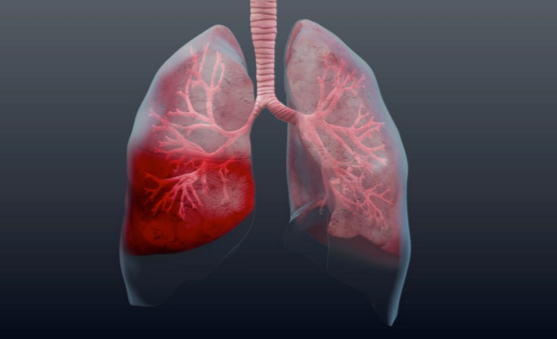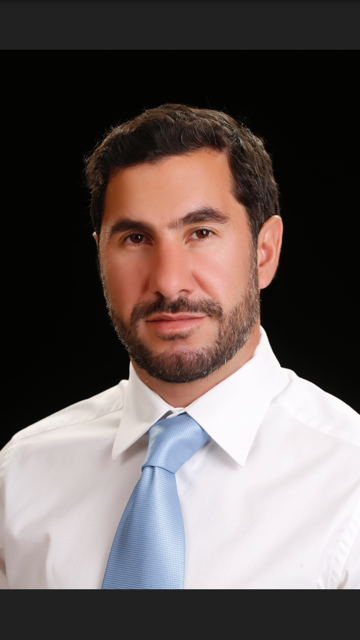ASPISAFE Solutions : Preventing Aspiration in the intensive care unit
Our lead product is a feeding tube that would prevent pneumonias in patients who are on life support in the ICU. Current feeding tubes in the market ironically facilitate pneumonias
New York, NY United States Medical Device Hospital Solutions Equity Raise MedStartr Ventures challenge MedStartr Ventures challenge
About our project

The problem we solve: Ventilator Associated Pneumonia (VAP) is a disastrous complication that happens in patients in the ICU who are on the ventilator. A main contributor to VAP is reflux of stomach contents back up the esophagus and down into the lungs. This process is facilitated by current feeding tubes in the market via several mechanisms. Feeding tubes however are necessary for all patients on the ventilator. Each episode of VAP costs hospitals up to 50 thousand dollars. Hospitals are minimally reimbursed for the extra patient stay.

About our solution: A new feeding tube design that blocks off any reflux of stomach contents back into the lungs and thus preventing complications like VAP, in addition to bleeding, acute respiratory distress syndrome and esophageal inflammation.
Progress to date:
After years of development we have now a proof of concept prototype that is ready to be finalized and tested. The feedback I got from physicians was excellent with no addressable concerns. The device is easy to manufacture, easy to use and will have other advantages in addition to VAP prevention. A presubmission meeting was held with the FDA, which confirmed a 510k pathway to market. Initial testing protocols were addressed with them as well. Two patents have been filed for IP protection with international coverage.
About Our Team

Creator: Talal Sharaiha
Location: New York
Education: St. George's Hospital University of London
Bio: Dr Sharaiha has been in the medical field since he graduated in 2006. He became an MD at age 23 after being one of the youngest graduates from St. George's university of London. He worked there and in Australia where he did emergency medicine. Dr Sharaiha then completed his internal medicine residency in Albert Einstein in 2011 where he decided to hold his subspecialty advancement in order to get involved with the entrepreneurial side of medicine. He was partly involved in a telemedicine start up and now consults for Altibbi.com the WebMD of the Middle East. Dr Sharaiha is no stranger when it comes to the start up world and his experience and determination are valuable assets for the success of this venture.
Hospital Affiliation: Hospital
Title: Founder
Advanced Degree(s): MD
About Our Company

Aspisafe Solutions
Location: 305 W 72nd Street
5C
New York, NY 10023
Founded: 2014
Product Stage: Prototype/MVP
YTD Sales: Working on it
Employees: 1-2
How We Help Patients
Unfortuantely, current feeding tubes in the market actually increase the risk of aspiration and thus increase the risk of pneumonias in patients. They do so by distrubing the upper and the lower esopahgeal sphincters. Those sphincters are there to prevent such reflux of stomach contents. My device will help prevent stomach reflux and thus prevent all of its complications, which are not limited to pneumonias only. Inflammation of the esophagus is also a big concern causing bleeding in ICU patients due to the increased amount of acid reflux. My device will help minimize bleeding as well as pneumonias. In addition, sometimes the feeding tube is misplaced into the lung causing disastrous consequences for the patient including death. With the insertion technique of aspisafe, the user will be absolutely certain that the device will be in the right place. The need for such an anti reflux feeding tube has been there for nearly a century. This device will be a game changer for patients in the ICU.
How We Help Physicians
proton pump inhibitors, gastric feeding, gastric reflux and the supine position. Head of bed elevation on its own has been shown to reduce the risk of VAP indicating that gastric reflux plays a major part in this infectious process. Two prospective studies showed that VAP is associated with more pepsin in tracheal aspirates indicating that VAP is related to aspiration of gastric contents. There is little doubt in our mind that preventing aspiration will help reduce VAP in the ICU. Aspisafe, not only helps reduce the risk of VAP, but it also helps confirm placement without the need for an xray. The user will know once he/she pulls back on the catheter and meets resistane that the catheter is in the right place. In addition, the production of saliva is minimal in ventilated patients due to the medication effects and the lack of oral feeding. This minimises the effect of saliva aspiration in those patients. Aspisafe also has a side lumen to suction any saliva that trickles down the esophagus.
" placeholder="" maxlength="2000">
There are a multitude ot studies that show a strong correlation between gastric aspiration and ventilator associated pneumonia (VAP). A few strong correlations that have been shown to inrease those risks include the use of feeding tubes, proton pump inhibitors, gastric feeding, gastric reflux and the supine position. Head of bed elevation on its own has been shown to reduce the risk of VAP indicating that gastric reflux plays a major part in this infectious process. Two prospective studies showed that VAP is associated with more pepsin in tracheal aspirates indicating that VAP is related to aspiration of gastric contents. There is little doubt in our mind that preventing aspiration will help reduce VAP in the ICU. Aspisafe, not only helps reduce the risk of VAP, but it also helps confirm placement without the need for an xray. The user will know once he/she pulls back on the catheter and meets resistane that the catheter is in the right place. In addition, the production of saliva is minimal in ventilated patients due to the medication effects and the lack of oral feeding. This minimises the effect of saliva aspiration in those patients. Aspisafe also has a side lumen to suction any saliva that trickles down the esophagus.
How We Help Hospitals
Hospitals would have the most to benefit from Aspisafe. Any incidences of pulmonary aspiration of gastric contents in the ICU, whether it leads to chemical pneumonitis, acute respiratory distress syndrome or ventilator associated pneumonia will cost the hospital money as it will increase the length of stay. Preventing gastric aspiration will reduce length of ventilation time, length of ICU stay and length of hospital stay. This will in turn reduce hospital costs significantly, especially since VAP is common, ranging from 10-20% of ICU patients and cost burden per patient is up to $50,000. The evidence regarding gastric aspiration and increased morbidity in the ICU is ovrwhelming and hospitals would have tremendous benefit from obtaining an anti aspiration feeding tube to be used in their intensive care units.
How We Help Partners
Preventing gastric aspiration will reduce length of ventilation time, length of ICU stay and length of hospital stay. This will in turn reduce hospital costs significantly, especially since VAP is common, ranging from 10-20% of ICU patients and cost burden per patient is up to $50,000. The evidence regarding gastric aspiration and increased morbidity in the ICU is ovrwhelming and insurance companies would be highly motivated to tackle this issue.
Challenge Mission
Key Milestones Achieved and Planned
Once studies for VAP prevention have been conducted within the next 3 years and show that stomach reflux prevention reduces length of ventilation time, length of ICU stay and the rates of VAP in ICU patients, marketing the device would be very compelling. This would show that Aspisafe is able to reduce hospital costs, reduce patient morbidity and perhaps mortality. We expect to achieve a 25% market penetation after 3-4 years giving rise to annual sales of 50-100 million.
Our Competitive Advantages
Hospitals now purchase new devices pending approval of Value Analysis Committees. The cost/benefit analysis of every new device comes into question. If I am able to show that the length of ventilation time, ICU time and rates of VAP are reduced with Aspisafe then hospitals would be compelled to pay a premium for this feeding tube as it will save them a lot of money. Preventing one ventilator associated pneumonia will cover the annual costs of Aspisafe for hospitals.
Barriers to Entry
There is a company based out of Israel that is also devising a new anti aspiration feeding tube called Lunguard (premarket). However, their device is more expensive with no additional cost/benefit to Aspisafe. Its use seems more complex and cumbersome. Feeding tubes are inserted multiple times a day and should be quick and easy to handle. The presence of a company like Lunguard validates the need for such a device to solve an extremely high impact problem in the ICU.
At this point, we are competing with current feeding tubes in the market that increase the risk of aspiration pneumonia. Current tubes in the ICU are actually not supposed to be used for feeding as they are made from PVC with a life span of only 3-5 days. In addition, most tubes in the market do not comply with the new ISO standard 80369-3 for feeding tube connectors, thus giving us great timing to enter the market as all feeding tubes must comply with this new standard.
Traction, Funding and Partners
Innovation Details
Intellectual Property Summary
Two Patents have been filed covering current and previous designs of Aspisafe. The first one was filed in October 2015 and the second was filed in May 2016. International protection via PCT filing has also been done. A comprehensive patent search was conducted prior to starting this venture with no results showing a device of similar mechanism. Initial PCT response from the first patent provided us with 5 rebuttal patents that had a very different mechanism from our current design. A trademark for Aspisafe has been filed as well.
Clinical Information
There are a multittude of studies out there that show aspiration of gastric contents increase the risk of ventilator associated pneumonia. I am happy to site those studies for anyone who asks. There is also a study that shows how saliva production decreases to a minimum in intubated patients. These studies form the basis of the need for such a device. A study on pigs was conducted 22 years ago proving that a catheter with a balloon in the stomach is able to prevent aspiration of gastric contents after inducing gastric reflux via several mechanisms. A similar study can be conducted to prove efficacy of our device. Contact with several animal labs and contract research organisations have been initiated and some quotes obtained for such a study to be conducted.
Regulatory Status
A presubmission meeting was held with the FDA. The FDA was satisfied with a 510k pathway to market. An initial efficacy study protocol was provided to the FDA and they were satisfied with the study methods to derive efficacy outcomes. Using the animal efficacy studies and the required performance tests, the device will initially be cleared for the indication of "prophylaxis of pulmonary aspiration of gastric contents during induction and termination of anesthesia". Once the device is in the market, studies will follow to show the risk reduction in VAP and so to obtain clearance for marketing the device in ICU patients.
How we will use the funds raised
All the money will be used to contribute to the design and development of Aspisafe. The next stages are building the finalized prototypes to get to a design freeze. Afterwards, verification and validation of the device will ensue. This will not be enough to get us to a 510k but other funding avenues are in process for us to get there. The total seed fund required to get aspisafe to a 510k is around 500K.
Thank You
I have worked in ICUs all over the world. Pneumonias in patients on life support are ubiquitous. Those patients generally are fighting for their lives for a completely different reason. Adding a pneumonia on top of that puts their lives at a higher risk. To date, up to 20% of patients on ventilators will get a pneumonia. This problem has been documented for more than a century with previous reports regarding the prevention of stomach reflux. I am obsessed and determined to solve the aspiration problem once and for all. Starting with patients in hospital and then moving to devices that prevent aspiration in other tube fed patients. Please help me fulfill this life long mission, and thus give a fighting chance to all future patients who end up on life support.
Investor Info
Market Size
There are around 5.7 million patients in the US who are admitted to the ICU annually. 20-30% of those patients require mechanical ventilation. This gives rise to 1.1-1.7 million ventilated patients annually. An additional 1-2 million patients are intubated in Europe annually. This gives a patient population of roughly 2-4 million annually. A price point for selling the tube would be around $100 giving a market size of 200-400 million in the US and Europe alone. This excludes patients who require emergency surgery and need Aspisafe to prevent stomach reflux during anesthesia.
Projected 3 Year Growth
Once studies for VAP prevention have been conducted within the next 3 years and show that stomach reflux prevention reduces length of ventilation time, length of ICU stay and the rates of VAP in ICU patients, marketing the device would be very compelling. This would show that Aspisafe is able to reduce hospital costs, reduce patient morbidity and perhaps mortality. We expect to achieve a 25% market penetation after 3-4 years giving rise to annual sales of 50-100 million.
Revenue Model
Hospitals now purchase new devices pending approval of Value Analysis Committees. The cost/benefit analysis of every new device comes into question. If I am able to show that the length of ventilation time, ICU time and rates of VAP are reduced with Aspisafe then hospitals would be compelled to pay a premium for this feeding tube as it will save them a lot of money. Preventing one ventilator associated pneumonia will cover the annual costs of Aspisafe for hospitals.
Competitors
There is a company based out of Israel that is also devising a new anti aspiration feeding tube called Lunguard (premarket). However, their device is more expensive with no additional cost/benefit to Aspisafe. Its use seems more complex and cumbersome. Feeding tubes are inserted multiple times a day and should be quick and easy to handle. The presence of a company like Lunguard validates the need for such a device to solve an extremely high impact problem in the ICU.
At this point, we are competing with current feeding tubes in the market that increase the risk of aspiration pneumonia. Current tubes in the ICU are actually not supposed to be used for feeding as they are made from PVC with a life span of only 3-5 days. In addition, most tubes in the market do not comply with the new ISO standard 80369-3 for feeding tube connectors, thus giving us great timing to enter the market as all feeding tubes must comply with this new standard.
Traction
.
Due Diligence Docs
Please note that access to the company's confidential materials is limited. Click this button to request access from the Company and its representatives.
Supporters
-
 , MBA
, MBA
11/24/2017 - Liked the project. , MBA
, MBA
11/24/2017 - Followed the project.
11/21/2017 - Liked the project. 18Medstartr
18Medstartr
Index Score18
Interest
Score0
Adoption
Score-
This campaign has ended but you can still get involved.See options below.
$ 10,000 goal
Instant Feedback
Help us find best new ideas to fund by telling us what you think. Your feedback goes straight to the team behind this project in private, so tell them what you really think.
Important Disclosure: MedStartr.com is a website owned and operated by MedStartr, Inc., which is not a broker-dealer, funding portal or investment advisor; and neither the website nor MedStartr, Inc. participate in the offer or sale of securities. All securities related activity is conducted through Young America Capital, LLC, a registered broker-dealer and member of FINRA/SIPC. No communication, through this website, email or in any other medium, should be construed as a recommendation for any securities offering.



